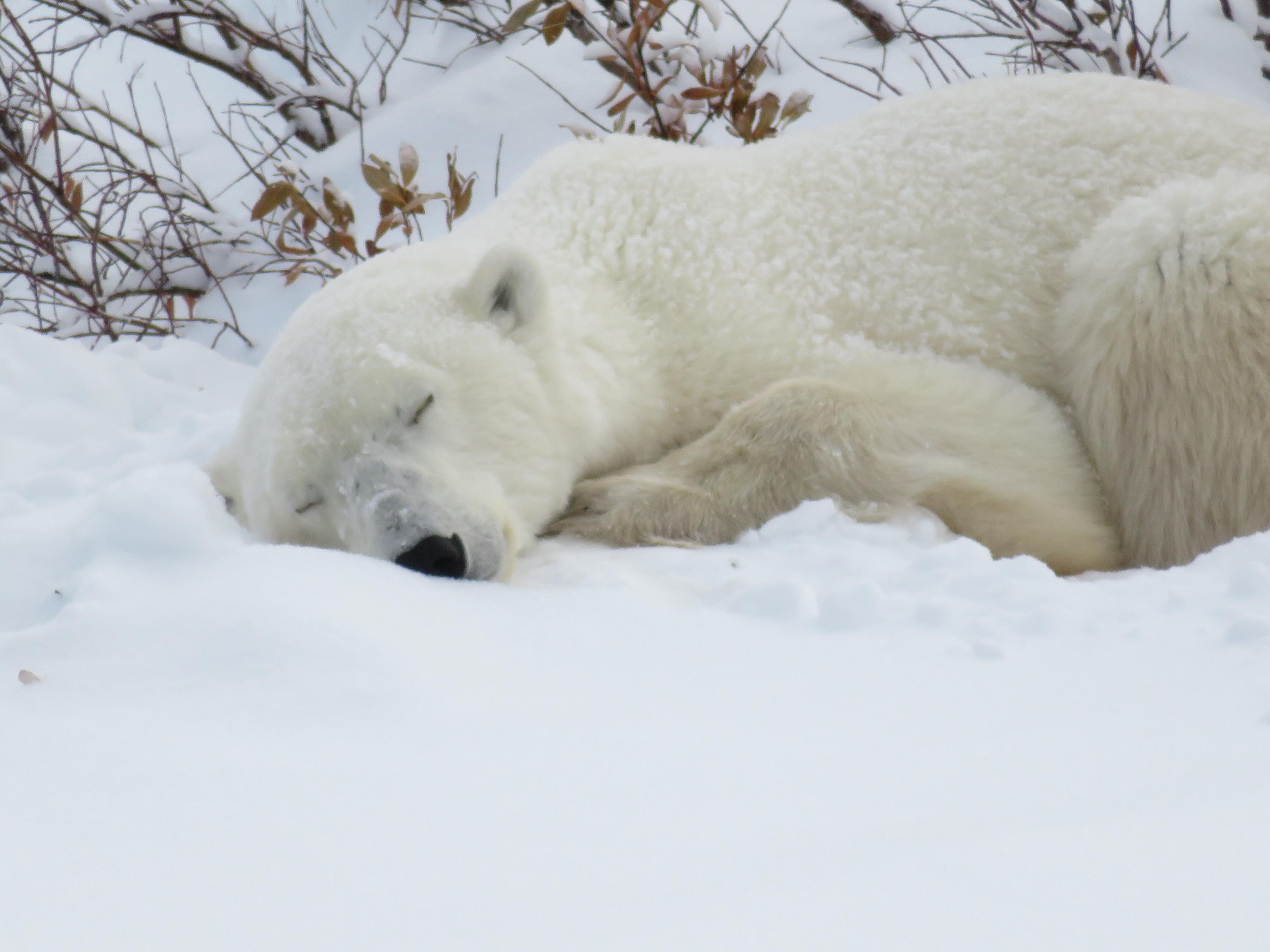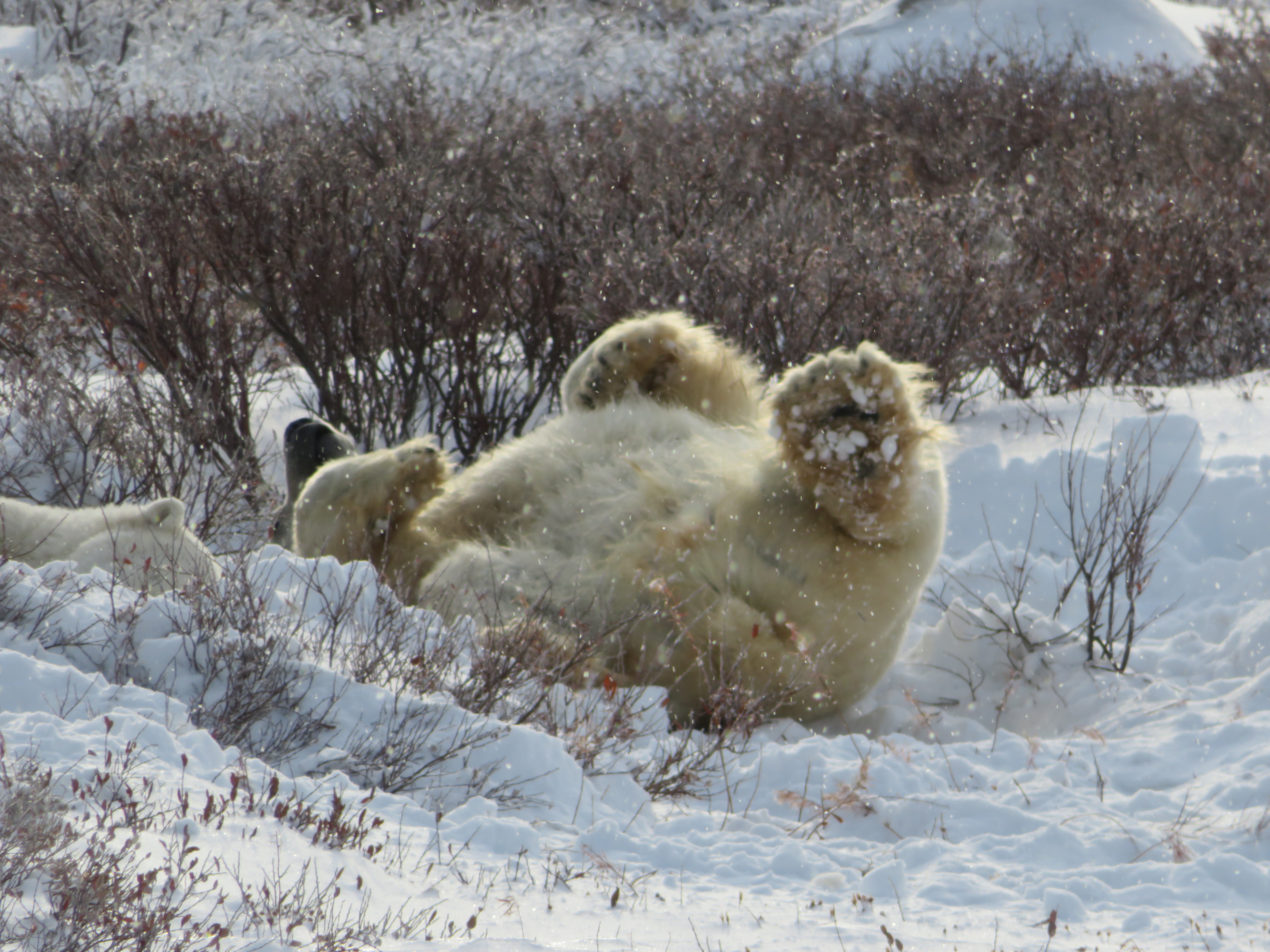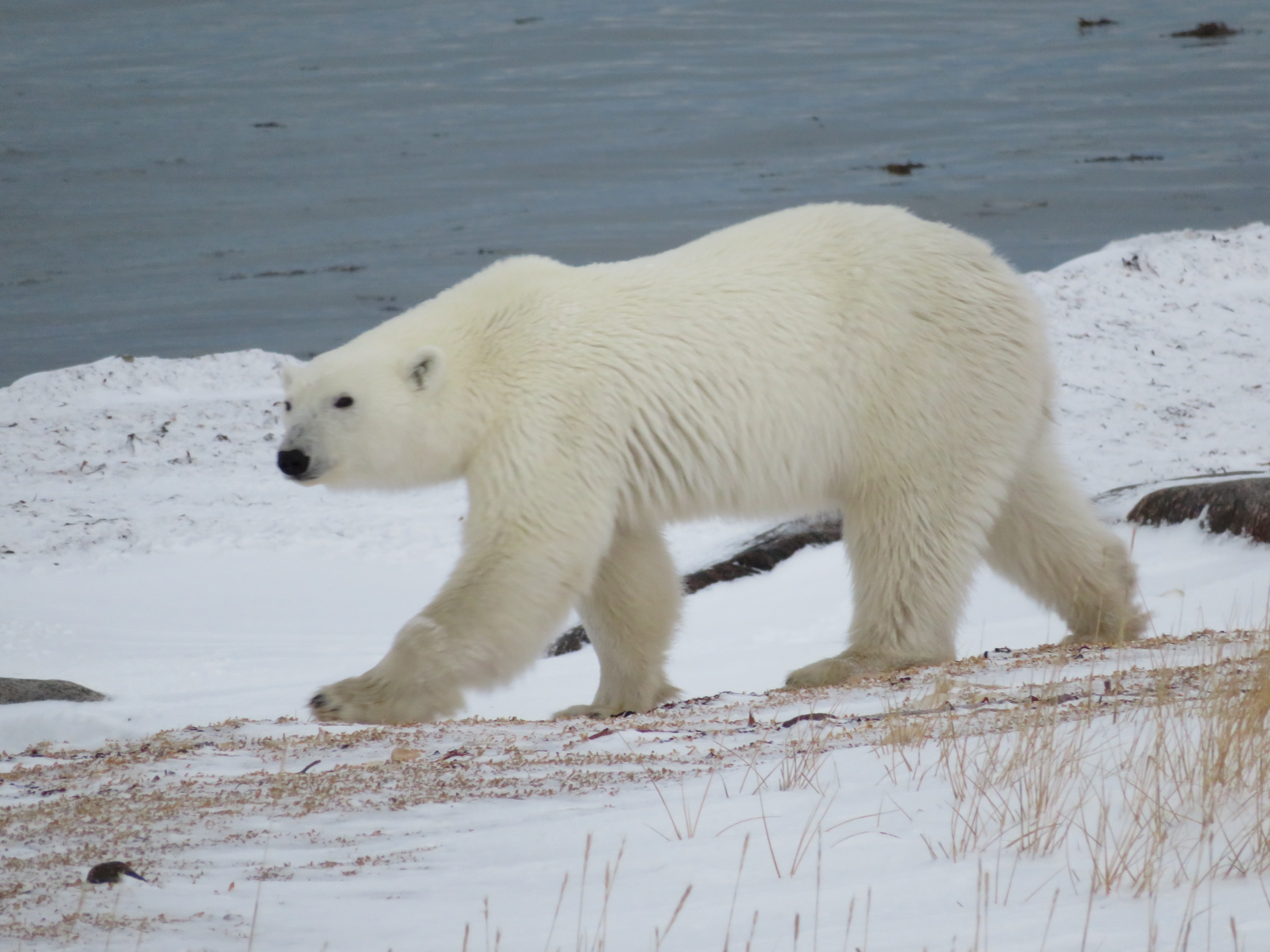Have you heard about the new Big Five? Move over lions! Polar bears are joining the fun. If you’ve gone on safari in Africa, you know the wondrous feeling that overcomes you when you see a tiger or elephant in its native habitat. Imagine, then, how surreal it will feel to see the world’s largest bear in its “hometown,” Churchill, Manitoba. These mighty beasts congregate in large numbers here (usually around a thousand) each fall to wait for the ice to freeze, making Churchill the “Polar Bear Capital of the World” and one of the most accessible places on Earth to view them. In fact, approximately 70 percent of the polar bears in the world are found in Canada.
How to Take a Polar Bear Safari
Photo by Susan Tuckey, Penguins2PolarBears - November 4, 2018 - Churchill, Manitoba. Rolling over was such an effort!
There are several options for polar bear safaris, generally offered during the height of the viewing season, October and November. The one I’ve personally experienced flew us directly to Churchill aboard a chartered Boeing 737. From there, we boarded a large ATV called a Tundra Buggy and set out on a full-day tour to search for polar bears and other Hudson Bay-area wildlife and fauna. The raised polar rover vehicles are all typically outfitted with huge windows for viewing, as well as an outdoor platform, allowing for safe, up-close encounters with the wild polar bears.
Within the Churchill Wildlife Management Area, where the greatest concentration is found, we were fortunate enough to spot males, both young and old, some of whom sparred for practice and others resting for the upcoming hunting season. One of the massive bears came up to the Tundra Buggy, resting its paw against the lower edge. Safely elevated above the bear, we could see him up close, in all his shaggy, cream-colored (not actually white) glory.
Many polar bear safari outfitters will also include other northern experiences in your day, for example, meeting a local musher and his dog-sled team, or enjoying an authentic cultural presentation, particularly if your trip is over a three to five day period.
During your polar bear safari, you’ll be accompanied by expert wildlife specialists and naturalists, who can enlighten you about the habitat, life journey, research on and conservation of the bears.
Did You Know?
Photo by Susan Tuckey, Penguins2PolarBears - November 4, 2018 - Churchill, Manitoba.
Polar bears aren’t white. Although they are depicted as such in storybooks, they’re actually colorless. Each strand of fur is pigment-free. With its hollow core, each strand reflects light and gives it the impression of being white.
Although scientists aren’t sure why, polar bears have black skin and dark blue, purple or black tongues.
Polar bears fast in the summer when the sea ice on the Hudson Bay melts. Their access to their main food source - the ringed seal - is cut off. They resume hunting again in late November when the ice returns.
Should I Go See the Polar Bears?
Think about it … depending on where you live, it may not be in your sights to travel to Africa to see gorillas and lions. But, the chance to see a polar bear, in its native northern Canadian habitat, really isn’t that far away. Let’s find a way to get you there.



